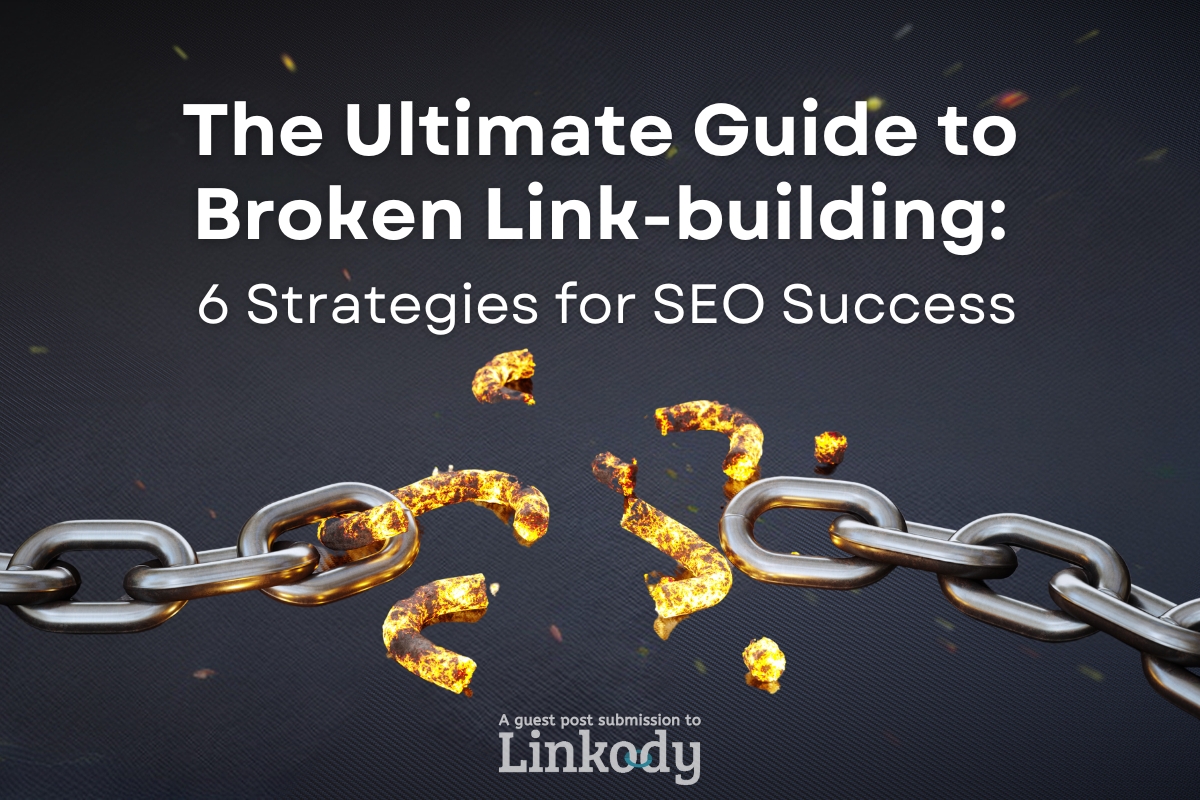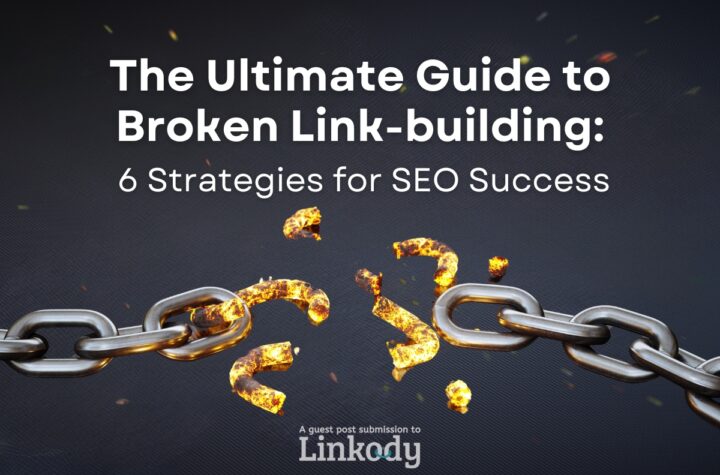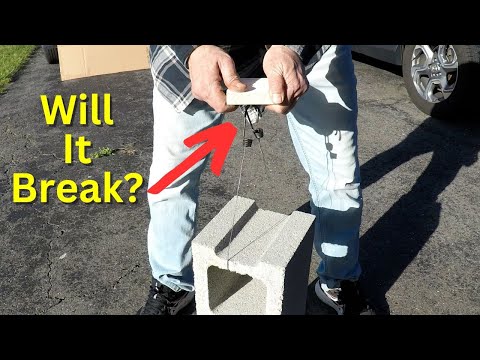

It’s no secret that building high-quality backlinks is crucial for search engine optimization (SEO) success. It improves your website’s search engine rankings and drives organic traffic.
However, frequently finding new opportunities for link acquisition can be difficult. 52.3% of digital marketers consider link-building to be the most challenging aspect of SEO. That is where broken link-building comes in.
Broken link-building is a powerful SEO strategy. It involves identifying broken links on relevant websites and offering your own content as a replacement. By doing so, you help website owners improve their users’ experience and, at the same time, gain valuable backlinks to your site.
In this blog post, we’ll dive deep into understanding broken link-building and explore some actionable strategies that can take your SEO efforts to the next level.
What are Broken Links & How Can They Be Used for Link-building?
Broken links are basically the links on websites that no longer work. They point to pages that have been deleted, moved, or are otherwise unavailable. When a user clicks on a broken backlink, they typically see an HTTP error code such as a “404—Page Not Found”.
Here is an example of it:

Broken backlinks are bad for user experience and can negatively impact a website’s SEO. This is because search engines like Google consider the quality and relevance of a website’s links when ranking pages. And, a high number of broken links indicates poor site maintenance and can decrease a site’s authority.
However, broken links also present an opportunity for link-building. Here’s how:
- Find relevant websites in your niche that have broken links
- Identify the content that the broken link originally pointed to
- Create similar or better content on your own website
- Reach out to the website owner and inform them about the broken link
- Suggest your content as a replacement for the broken link
If the website owner finds your content valuable and relevant, they may replace the broken link with a link to your page. This will give you a high-quality backlink and help restore the website’s broken link issue, making it a win-win situation.
Is Broken Link Building Impactful?
If you are wondering if broken link-building really works, the simple answer is yes! At least 44% of backlinks in the last seven years have been dead or broken, offering an excellent opportunity to leverage your link-building campaign.
Here are a few more reasons why broken link-building can be an impactful SEO strategy.
• Helps you get high-quality backlinks from authoritative websites
When an authoritative website links to your content, it signals to search engines that your website is valuable and trustworthy. This enables your pages to rank higher for relevant keywords and attract more qualified visitors to your site.
This increases your website’s overall authority and credibility in your niche. When you consistently provide high-quality content that fills the gaps left by broken backlinks, search engines recognize your website as a reliable source of information.
Over time, this can lead to improved search engine rankings and increased visibility for your brand.
• Lets you find link opportunities your competitors may have missed
By proactively finding and replacing broken links, you can gain a competitive edge and outrank your rivals in search results. Your competitors may overlook broken backlinks or fail to act on them.
You can seize these opportunities to acquire valuable backlinks and improve your website’s search engine performance.
• It is relatively inexpensive compared to other link-building strategies
It primarily requires time and effort to find broken links and create relevant content, while other link-building tactics may involve paying for placements or investing in sophisticated tools.
This makes it a cost-effective option for businesses with limited marketing budgets or those looking to maximize their SEO return on investment (ROI).
• It is a white-hat strategy
Because broken link-building focuses on providing value and improving user experience, the backlinks you acquire are less likely to be flagged as spam or penalized by search engines. This means it is a sustainable SEO practice that you can reap the benefits from.
How to Start Broken Link-building
Now that we have understood the importance of broken link-building, let’s dive into how to start a broken link-building campaign.
1. Identify your target websites
To begin your broken link-building campaign, focus on identifying relevant, high-authority websites in your niche. Prioritize websites that are closely related to your industry or topic and have high domain authority, as links from these sites will have a greater impact on your SEO.
Use tools like Linkody, Ahrefs broken link checker, or SEMrush to determine the authority and relevance of potential target websites.
Here is an example from the Linkody dashboard conducting comprehensive competitor analysis, enabling you to gain valuable insights into your competitors’ link-building strategies.

2. Find broken links on your target websites
Once you have a list of target websites, you can use tools like Linkody to analyze their backlink profile and find potential link opportunities.
Export the backlink profile of your target websites and look for pages with a high number of external links, as these are more likely to contain broken backlinks. Resource pages and industry guides often contain a high number of external links and are prime targets for broken link-building.
You can find resource pages using Google search to narrow your search. Here are some templates:
[topic] intitle:”useful resources”
[topic] inurl:resources
Here is an example:

3. Analyze the content of the broken links
To create effective replacement content, visit the URLs of the broken links to understand what type of content they originally pointed to. Take note of the topic, format (e.g., blog post, white paper, infographic, video), and quality of the original content. This information will help you create replacement content that closely matches the original and provides value to the linking website’s audience.
Assess the relevance and value of the original content to determine whether it aligns with your niche and target audience. Consider how your replacement content can provide additional value to the linking website’s audience.
4. Reach out to website owners
To reach out to website owners or editors, look for contact pages, “About Us” sections, or LinkedIn profiles to find email addresses. You can use tools like Hunter.io or VoilaNorbert to find email addresses associated with the domain or connect with website owners or editors on social media platforms like LinkedIn or Twitter.
Craft a personalized email about the broken link and your suggested replacement. Ask them to consider updating the broken link. Also, don’t forget to add a summary of the content you are planning to replace in the broken backlinks.
5. Create replacement content
Once the website owners provide a green signal for your pitch, get into creating the content. Use the insights gathered from analyzing the broken links and develop high-quality content that closely matches the original topic and format. Ensure your content is well-researched, informative, and engaging.
Tailor your content to the specific needs and interests of the linking website’s audience. Provide practical tips, actionable advice, or unique insights that will be valuable to readers. Use examples, case studies, or data to support your points and demonstrate your expertise.
6. Follow up and monitor your progress
Keep track of your outreach efforts and acquired links using a spreadsheet or a tool like Linkody to organize your broken backlink-building campaign. Record the websites you’ve reached out to, the dates of your outreach, and any responses you receive. This will help you measure the success of your campaign.
Monitor your website’s search engine rankings and traffic using tools like Google Analytics and Google Search Console. Look for improvements in your rankings for target keywords and an increase in organic traffic to your site. Analyze the data to determine the impact of your broken backlink-building efforts and adjust your strategy as needed.
Here is an example from the Linkody dashboard that shows how seamlessly you can monitor your link-building progress.

6 Best Practices to Follow for Broken link-Building
Even though starting a broken link-building campaign seems cost-effective and easy, it requires patience and the right strategies to be successful. Here are some of the top best practices for an effective campaign.
1. Personalize your outreach emails
When reaching out to website owners about replacing broken links, take the time to craft personalized, compelling outreach emails. Research has shown that the top email marketing teams believe that personalization is the best way to improve email performance.
Here is what you can do:
- Start with a friendly greeting and introduce yourself briefly.
- Address the website by the name and compliment the work they do.
- Mention that you found a broken link on their website and provide the specific URL.
- Explain why you believe your content would be a valuable replacement for that link.
Personalized outreaches like these show that you’ve taken the time to understand the website and its audience, and can help you build a rapport with the website owner.
2. Focus on building relationships, not just links
While the primary goal of broken link-building is to acquire high-quality backlinks, it’s important to approach the process with a relationship-building mindset. When reaching out to website owners, focus on establishing a genuine connection and offering value, rather than simply asking for a link.
By building strong relationships with other website owners in your niche, you’ll create opportunities for ongoing collaboration and support that can benefit your SEO efforts in the long run.
3. Ensure your replacement content is relevant and valuable
When creating content to replace broken links, it’s crucial to ensure that your piece is highly relevant to the linking website’s audience and provides genuine value. Don’t try to force a connection between your content and the broken link. Instead, take the time to understand the context and intent behind the original link, and craft your content accordingly.
4. Provide value beyond just a replacement link
To increase the likelihood of your content being accepted as a replacement for a broken link, look for ways to provide additional value to the website owner and their audience. This could include offering to promote their content on your own channels, providing insights or feedback on their website, or suggesting other resources that their audience may find useful.
By going above and beyond in your outreach, you’ll demonstrate your commitment to providing value and building a mutually beneficial relationship.
5. Prioritize quality over quantity
When it comes to broken backlink-building, it’s important to prioritize the quality of the links you acquire over the sheer quantity.
A single high-quality link from a reputable, authoritative website in your niche can be worth far more than a dozen low-quality links from irrelevant or spammy sites.
6. Continuously refine and scale your process
Broken link-building is an ongoing process.
To achieve the best results, you should continuously refine and scale your approach. As you execute your campaigns, take note of what works well and what doesn’t, and use these insights to optimize your process over time.
Look for ways to automate or streamline certain tasks, such as using tools to find broken links or templates for outreach emails, to make your broken link-building more efficient and effective.
Other Methods for Building Links
While broken link-building is a powerful strategy for acquiring high-quality backlinks and boosting your website’s SEO performance, it’s just one of many tactics you can use to build a strong and diverse link profile.
In this section, we’ll explore some other effective methods for building links that can complement your broken link-building efforts and help you drive even better results for your website.
Guest blogging
Guest blogging involves creating content for other websites in your niche and including a link back to your own site within the post. This tactic can help you reach new audiences, establish your expertise and authority, and acquire high-quality backlinks from reputable sources.
To succeed with guest blogging, focus on creating exceptional content that provides genuine value to the host website’s audience. Of course, be sure to follow any set guidelines or requirements provided by the website owner.
Skyscraper technique
The skyscraper technique is a link-building strategy that involves finding popular, high-performing content in your niche, creating an even better version of that content, and then reaching out to websites that have linked to the original piece to encourage them to link to your improved version instead.
This tactic can be effective for acquiring links from authoritative sources and positioning your website as a go-to resource for valuable, high-quality content.
Infographic link-building
Infographics are highly shareable and linkable content that can help you acquire backlinks from a wide range of sources.
To build links with infographics, create informative, visually appealing designs that communicate valuable insights or data related to your niche. Then, reach out to websites that may be interested in sharing or embedding your infographic on their own site.
Be sure to include an embed code or link back to your website to encourage proper attribution and link-building.
PR and media outreach
Earning mentions and links from high-profile media outlets and publications can be a powerful way to build your website’s authority and drive referral traffic.
To succeed with PR and media outreach, focus on creating newsworthy content or stories related to your niche, and then reach out to journalists, bloggers, or publications that may be interested in covering your story.
Resource page link-building
Resource pages are curated lists of links and resources related to a specific topic or niche, and can be a valuable source of high-quality backlinks for your website.
To build links from resource pages, use search operators to find relevant pages in your niche, and then reach out to the website owner to suggest including a link to your own valuable resource or content.
Be sure to emphasize the value that your resource provides and how it can benefit their audience.
Testimonial link-building
If you use and appreciate a product or service related to your niche, consider reaching out to the company to offer a testimonial or review in exchange for a link back to your website.
Many companies are happy to feature positive reviews or testimonials on their website and may be willing to include a link to your site as a way of saying thanks.
This tactic can be a win-win, helping you acquire a valuable backlink while also supporting a product or service that you believe in.
Conclusion
Building a robust link profile through broken link-building requires consistent effort and a long-term commitment to quality and relationship-building.
By focusing on creating valuable content, fostering genuine connections with industry peers, and leveraging the right tools, you can maximize your broken link-building results and achieve sustainable SEO success.
Linkody, a powerful backlink tracking and analysis platform, can be an invaluable asset in your broken link-building strategy. With features like real-time link monitoring, in-depth competitor analysis, and actionable insights, Linkody empowers you to make data-driven decisions and optimize your link-building efforts for maximum impact.
Ready to elevate your link-building strategy and drive lasting results? Try Linkody today and discover how our platform can help you unlock the full potential of broken link-building for your website.

Cassandra Rosas is the Head of SEO Outreach and Link-Building at Omniscient Digital, she loves writing about topics such as Search Engine Optimization (SEO), content operations, e-commerce, and social media marketing. In her spare time she likes listening to music, doing oil painting and watching SciFi movies.
The post The Ultimate Guide to Broken Link Building: 6 Strategies for SEO Success appeared first on Linkody's Blog.





More Stories
SEO Game Changer: How Topic Clusters and Pillar Pages Can Skyrocket Your Rankings?
Every AI SEO Tool Mentioned At Pubcon Vegas
Generative Engine Optimization: Is this the Death of SEO?